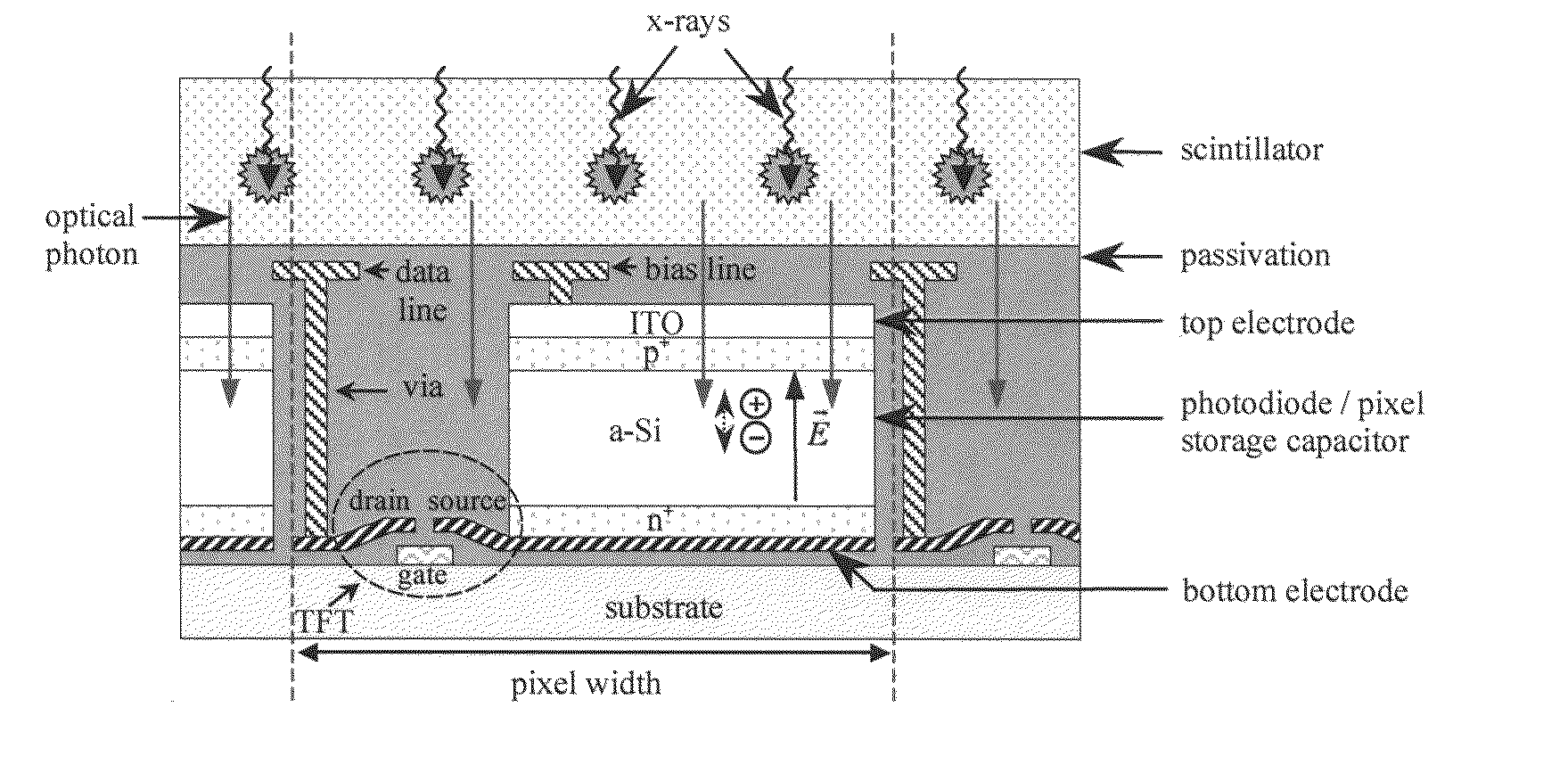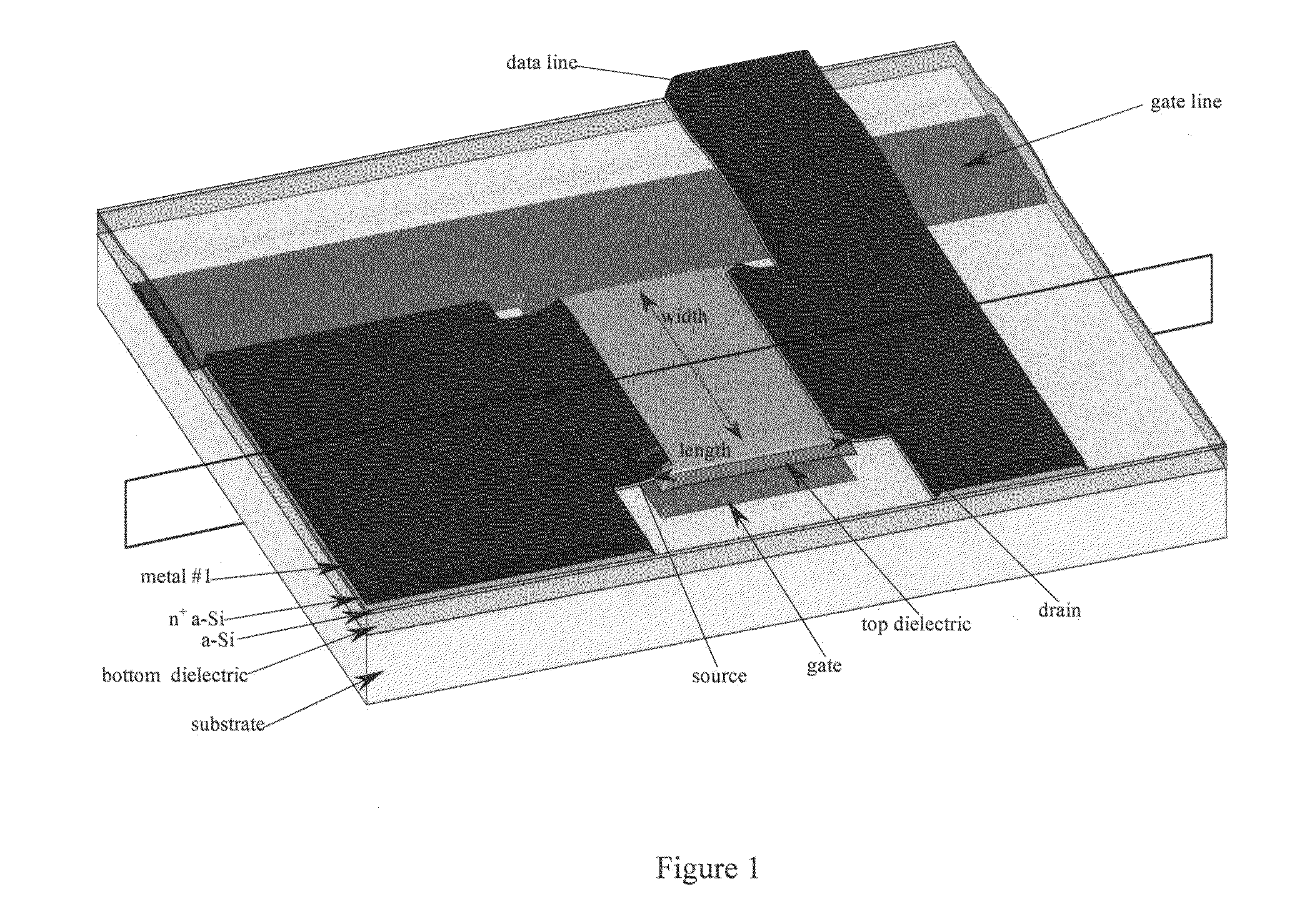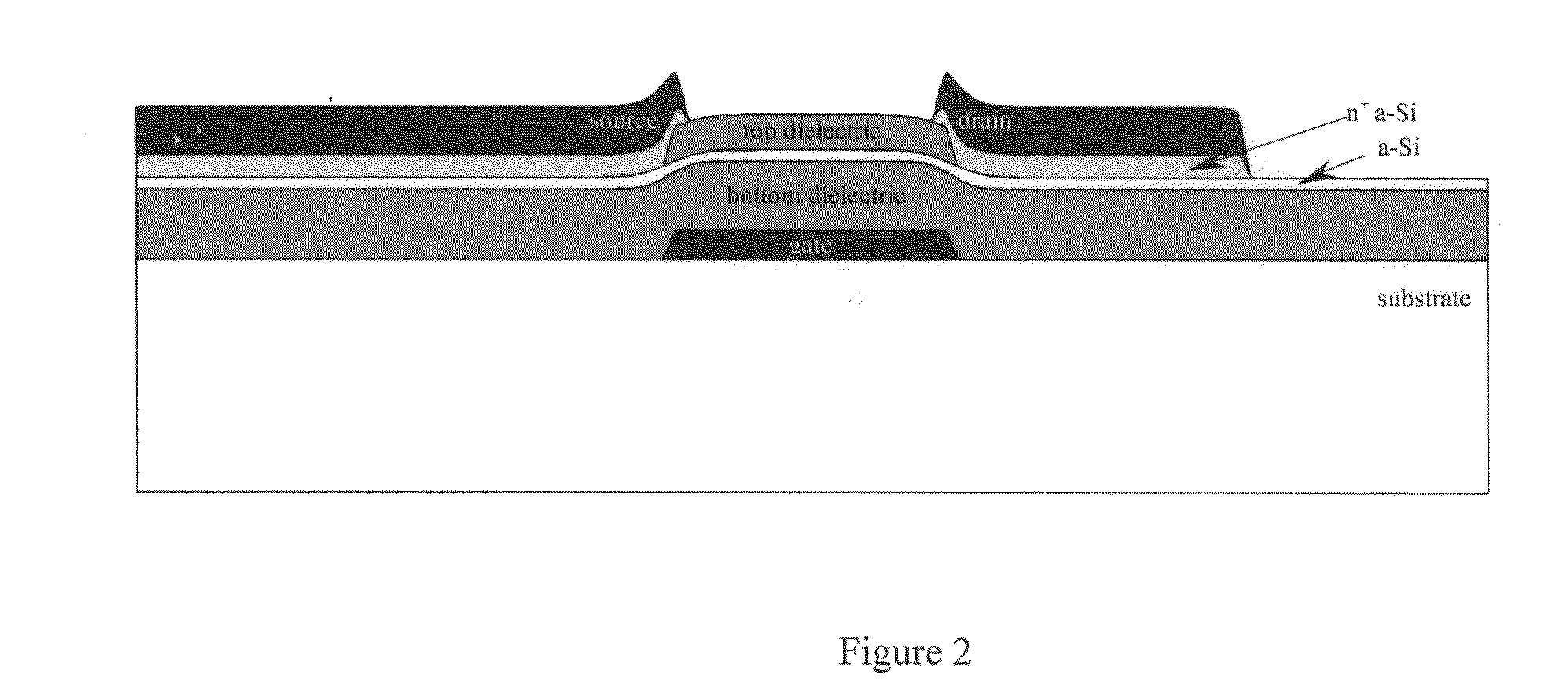Photodiode and other sensor structures in flat-panel x-ray imagers and method for improving topological uniformity of the photodiode and other sensor structures in flat-panel x-ray imagers based on thin-film electronics
a flat-panel x-ray imager and sensor technology, applied in the direction of x/gamma/cosmic radiation measurement, instruments, radioation controlled devices, etc., can solve the problems of introducing additional, difficult to yield and costly production of devices, and limiting the range of imagers
- Summary
- Abstract
- Description
- Claims
- Application Information
AI Technical Summary
Problems solved by technology
Method used
Image
Examples
Embodiment Construction
[0091]The incorporation of out-of-plane photodiode structures into the pixel design of indirect detection active matrix arrays provides a mechanism for significantly improving optical fill factor. In the case of the implementation of continuous photodiode structures, optical fill factors as large as unity, corresponding to the entire area of the pixel, are possible. Such optical fill factor improvements result from eliminating the competition for pixel area between the photodiode and other pixel elements such as the addressing TFT, address lines and gaps.
[0092]Out-of-plane photodiode structures also make it possible to introduce additional elements to the pixels (such as TFTs, diodes, capacitors and resistors, as well as vias, traces, control lines, address lines and ground planes), thereby making more complex pixel circuits possible. As in the case of active matrix arrays, these additional elements would reside in a separate plane from that of the photodiode and therefore would not...
PUM
 Login to View More
Login to View More Abstract
Description
Claims
Application Information
 Login to View More
Login to View More - R&D
- Intellectual Property
- Life Sciences
- Materials
- Tech Scout
- Unparalleled Data Quality
- Higher Quality Content
- 60% Fewer Hallucinations
Browse by: Latest US Patents, China's latest patents, Technical Efficacy Thesaurus, Application Domain, Technology Topic, Popular Technical Reports.
© 2025 PatSnap. All rights reserved.Legal|Privacy policy|Modern Slavery Act Transparency Statement|Sitemap|About US| Contact US: help@patsnap.com



